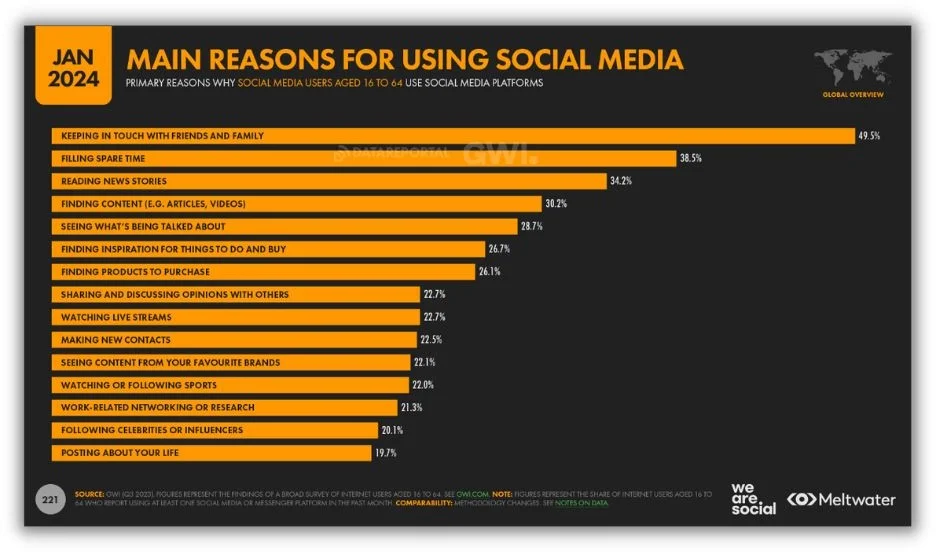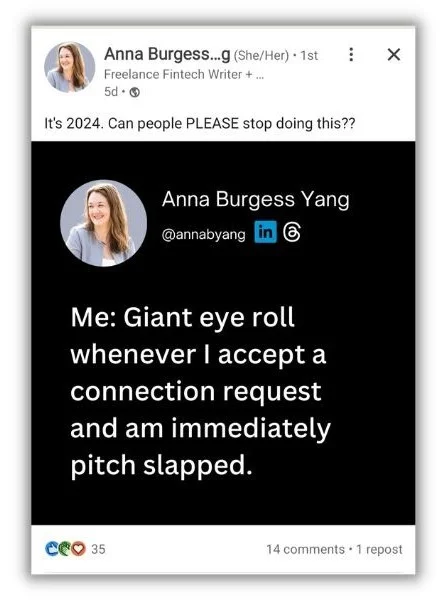Are you selling products to individuals who frequent social media platforms? If so, understanding social selling is crucial.
Social selling enables you to leverage social media to identify potential prospects, establish authentic connections with them, and position yourself as the preferred choice when they are ready to make a purchase.
While it's not overly complicated, employing aggressive sales tactics won't cut it. Social selling requires a more nuanced approach.
In this detailed guide, you will receive a comprehensive roadmap to kickstart your social selling strategy. Learn what to post, when to engage, and how to enhance conversions without resorting to hard selling.
Understanding Social Selling
Social selling is a lead generation technique where you discover, assess, and engage with new prospects on social platforms. This approach involves utilizing social listening to understand the topics that matter to your prospects and participating in or initiating conversations to establish relationships with them.
For instance, imagine you work for a commercial contracting company. If someone on X (previously known as Twitter) discusses expanding their business in your region and seeks advice on building codes, you can provide valuable insights along with useful links. By being helpful and informative, you position yourself at the forefront when they require a bid for upgrading their new establishment.

It's important to note that social selling prioritizes generating new leads over immediate conversions. The goal is to foster trust through authentic connections rather than merely closing transactions.
One of the key advantages of social selling is that it functions like a perpetual networking event that you can access without the need to travel. It allows you to cultivate and nurture individual relationships at a scale that would be unattainable through traditional in-person networking or cold calling.
Social Selling vs. Traditional Selling
Social selling differs from conventional sales strategies in terms of the platform used, target audience, and approach to engagement.
Social selling transpires on social media platforms, whereas traditional selling primarily occurs face-to-face or through cold calls.
With social selling, you directly engage with product users or decision-makers, whereas traditional sales methods typically involve interacting with gatekeepers before reaching the key decision-makers.
Social selling relies on warm introductions and personalized conversations to connect with targeted prospects, whereas traditional sales tactics often rely on generic scripts and mass outreach.

Social Selling vs. Social Media Marketing
Social media marketing primarily involves disseminating content to a broad audience, whereas social selling focuses on cultivating relationships through personalized one-on-one interactions.
While social media marketing may emphasize conversions and incorporate features like social shopping for direct purchases, social selling revolves around engaging prospects in meaningful conversations with the eventual conversion occurring outside the social platform.
Although distinct in their approaches, social media marketing and social selling complement each other. While you may create general social media posts as part of your marketing strategy, engagement with prospects in the comments section can seamlessly transition them into your social selling funnel.
Target Audience for Social Selling
Social selling is suitable for any business selling products or services to individuals active on social media platforms. Considering that over 62% of the global population (and over 90% of the US population) is present on social media, virtually every business can benefit from social selling.
Businesses of all sizes can leverage social selling. Whether you are a Fortune 500 software company engaging with CTOs making significant purchasing decisions or a local physical therapist sharing health tips with fitness enthusiasts in your network, social selling can be instrumental in expanding your reach and fostering connections.
Benefits of Social Selling
1. Establishing Connections in a Comfortable Space
The average person spends approximately 2.5 hours daily on social media platforms, seeking information and engaging with brands. By being present where your audience is comfortable, you can position yourself as a valuable resource when they seek relevant content or solutions.

2. Building Trust Through Conversations
Unlike traditional sales interactions where trust is often challenging to establish, social media provides an environment conducive to cultivating relationships over time. By engaging in meaningful conversations and providing valuable insights, you can build trust with your audience.
3. Perfectly Timed Outreach
Social selling allows you to monitor conversations through social listening and engage with prospects at strategic moments. By identifying discussions relevant to your brand or industry, you can connect with potential leads when they are most receptive.
4. Proven Effectiveness
Data from LinkedIn indicates that sales teams incorporating social selling strategies tend to achieve better outcomes, including creating more opportunities, meeting sales quotas, and outperforming peers who do not utilize social media for sales purposes.
5. Exceptional Return on Investment
Embarking on social selling requires minimal investment initially, with the potential for significant returns in the form of quality leads and enhanced efficiency. As you progress, you can explore tools to streamline your social selling efforts and maximize results.
The Four Pillars of Social Selling
- Establishing Your Brand on Social Media: Create a compelling profile and share relevant content that reinforces your expertise in the field.
- Expanding Your Network: Identify current and potential customers, industry thought leaders, and influencers for meaningful connections.
- Engaging with Insights: Position yourself as an informative source by sharing valuable content directly with your prospects when they need it.
- Building Relationships: Strengthen connections and foster trust with key decision-makers and influencers within your network.
Optimal Social Selling Platforms
The choice of social selling platform depends on your target audience and the nature of your offerings. However, LinkedIn and Twitter are particularly well-suited for social selling due to their professional user base and robust networking capabilities.
LinkedIn is highly effective for B2B social selling, boasting over 1 billion users primarily engaged in professional conversations. The platform offers tools like LinkedIn Sales Navigator to enhance prospect targeting and relationship-building.

Twitter facilitates public discussions, making it ideal for showcasing expertise and engaging with relevant conversations. Utilize features like hashtags and Lists to discover and connect with potential leads in your industry.
Facebook, TikTok, and Instagram
While Facebook, TikTok, and Instagram are popular social platforms, they are less conducive to social selling due to their casual user base. However, depending on your product offerings, you may still find opportunities to engage with prospects on these platforms.
Social Selling Strategies on Facebook
Utilize Facebook groups to engage with like-minded individuals and share valuable insights without being overly promotional. Building genuine relationships within groups can lead to meaningful connections and potential leads.
Social Selling Strategies on TikTok
TikTok's visual nature makes it a promising sales channel for product discovery. While direct conversations may be limited, creating engaging videos can attract potential customers and drive brand awareness.
By leveraging the appropriate social selling platforms and strategies, you can effectively connect with prospects, build lasting relationships, and drive conversions in the dynamic landscape of social media.
—————————————————————————————————————————————
By: Rob Glover
Title: Social Selling: A Comprehensive Guide to Selling on Social Media
Sourced From: www.wordstream.com/blog/social-selling
Published Date: Wed, 21 Feb 2024 20:26:15 +0000





Leave a Reply